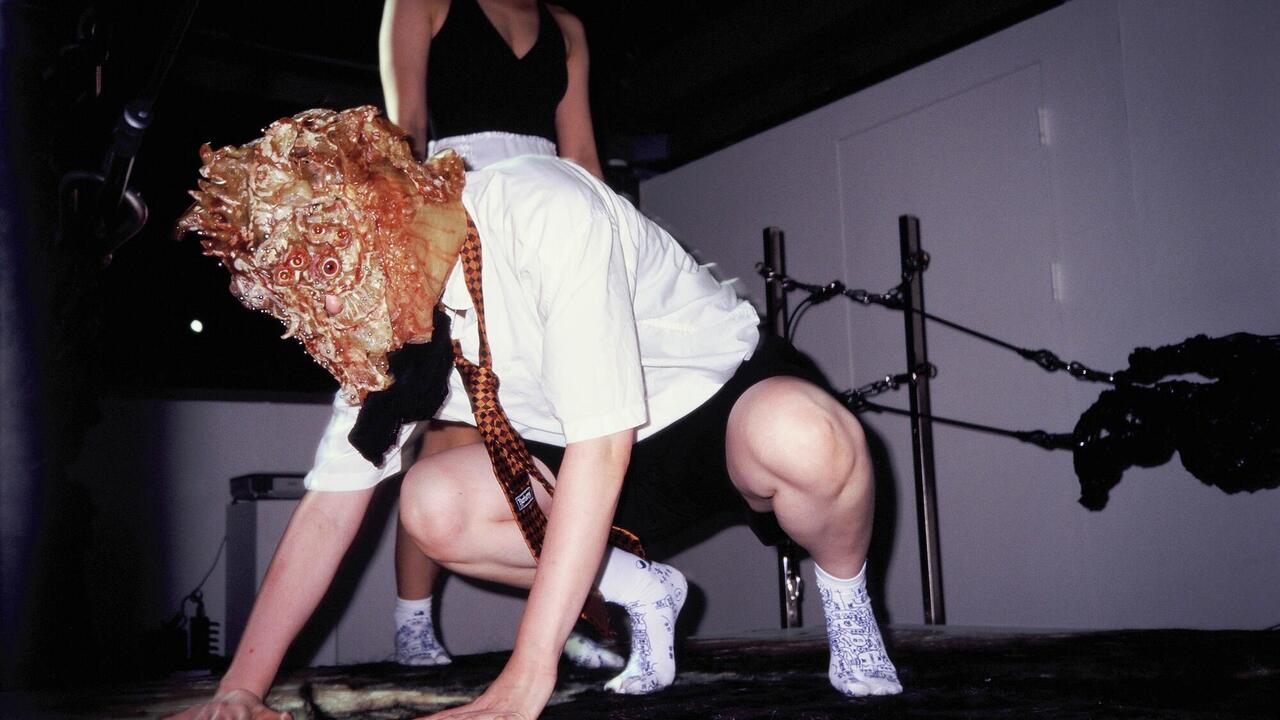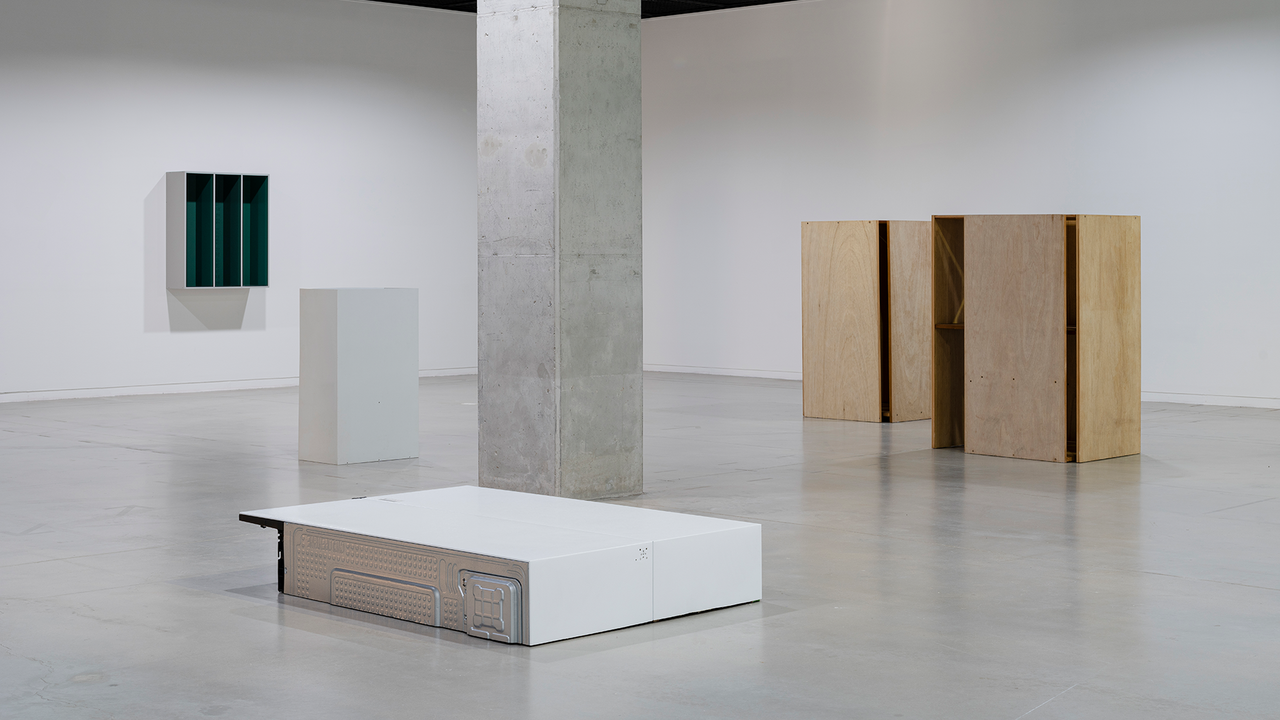Sophie-Therese Trenka-Dalton
Heidelberger Kunstverein
Heidelberger Kunstverein

In early 2014, Sophie-Therese Trenka-Dalton spent three months on a residency in Dubai. This was no arbitrary choice. For some time, the Berlin artist has been working with motifs from the Arab world (ancient Mesopotamia, Assyria and Babylonia) and the interplay of hypermodern building projects and traditional architectural forms in Dubai. These were the themes of Dubayyland at Heidelberger Kunstverein, her first solo show at a major institution, including photographs, (readymade) installations, wall sculptures and a film – the result of her research and work in ‘Dubayy’ (once a common Western spelling).
Thematically, the exhibition was marked by a peculiar simultaneity of gigantomania and miniaturization, wide-open space and dense development. In the Kunstverein’s downstairs ‘Studio’ space, the show began with a colour photograph on the wall, cut into a circular shape, a picture of a helium balloon like those sold at fairgrounds. The balloon floats against a blue sky and has ‘U.A.E.’ printed on it for the United Arab Emirates. In the background is a blurred section of the dazzling 800-metre skyscraper the Burj Khalifa. It is impossible to tell how high or how far from the building the ballon was when Trenka-Dalton took the picture. This work (Balloon UAE, from the series Jumeirah, all works 2014) blurs proportions with a disorientating effect. A similar one was produced in a room to the right where Trenka-Dalton had arranged miniature crystal figures of the Burj Khalifa sold in Dubai souvenir shops on the stone floor (Burj Khalifa). Immediately above the tip of the central figure hung a golden keyring in the shape of a lead plummet – once used to measure vertical lines on building sites. The keyring was suspended from a thin gold chain from the glass atrium far above, guiding the visitor’s gaze up towards the sky (which was, of course, not such a beautiful blue as in Dubai).
The way Trenka-Dalton works with proportion here cleverly reflects the experience of space in the emirate, where buildings of even the most record-breaking dimensions tend to be optically shrunk by the background of endless desert, cloudless skies and the Persian Gulf. This may also be why the sculptures on roundabouts in Dubai (and neighbouring emirates) tend to be so imposing – in order not to ‘disappear’. Trenka-Dalton has photographed a number of them, presented here in the book Roundabout Monuments of the UAE. They include sculptures of an oil lamp, coffeepots, a swordfish, an eagle – in the middle of a traffic island, as tall as a house. Curiously, Trenka-Dalton’s perfectly framed photographs rarely feature cars or people; she is clearly not interested in documenting ‘life’ in Dubai or exploring related issues (treatment of guest workers, status of women). Instead she shows Dubai ‘empty’ – as an accumulation of recurring shapes, arches and towers.
For the exhibition’s most impressive work, the 11-minute video NAKHEEL Palm Jebel Ali, Trenka-Dalton managed to sneak into the abandoned building site of the Palm Jebel Ali. In 2008, after the global financial crisis, work on two of the three planned island paradise resorts off Dubai’s coast (including Palm Jebel Ali) was halted by Nakheel Properties, Dubai’s state-owned real-estate firm. Trenka-Dalton positioned her video camera in rooms inside the abandoned sales centre for the complex, built to showcase the luxurious lifestyle offered by the island’s planned villas. One of the rooms, something like a health spa, already has a marble floor; the picture window looks out over heaps of sand that have been tipped into the sea; pigeons have made their home in the building’s domes, covering everything with their droppings.
The series of static shots, accompanied by the original audio, may recall the architecture films of Heinz Emigholz, but rather than a filmed inventory of legendary buildings, the aim here is to document sudden abandonment. When the money stopped flowing, everything was left where it lay. One image shows a shovel on the ground. With this eerie archaeology of the present, the artist has no need to be explicit about the merciless systems that bring forth such ruins. The pictures speak for themselves.
Translated by Nicholas Grindell
















